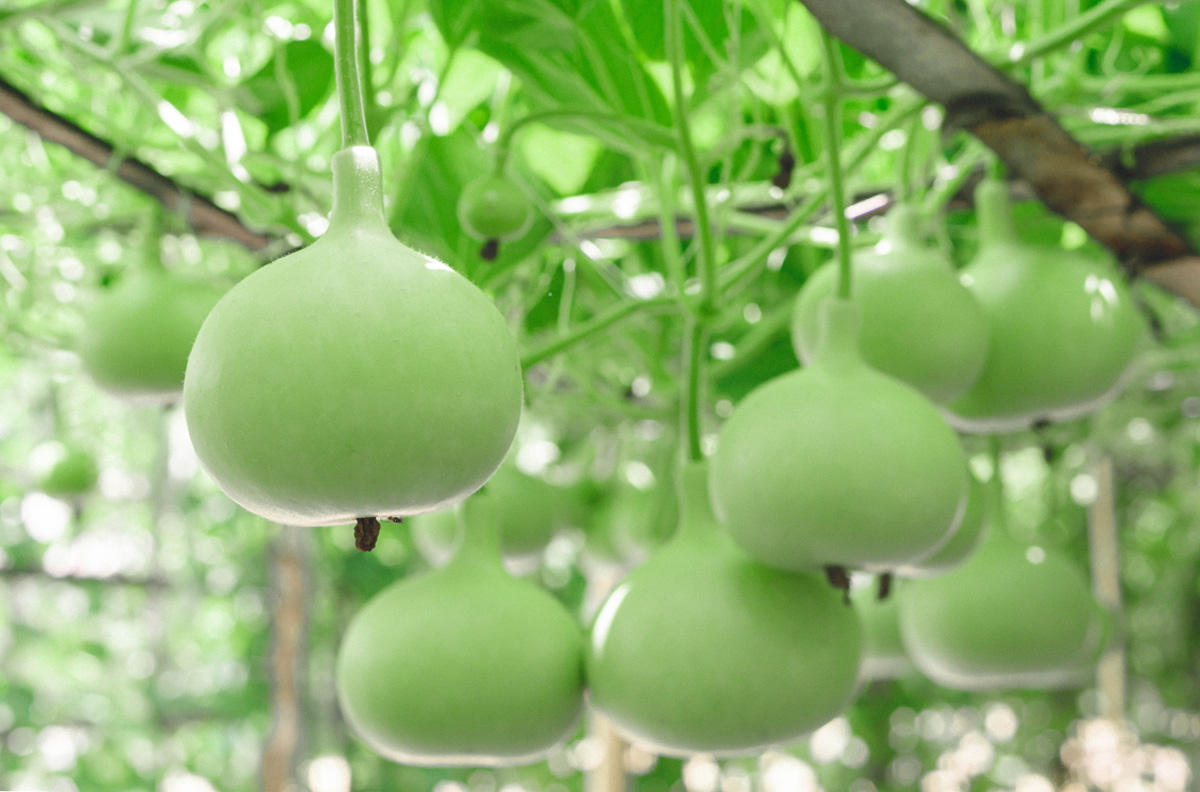
Bottle Gourd Genome Tracks its Origin and History
April 10, 2024| |
A team of researchers from the Boyce Thompson Institute (BTI) and the United States Department of Agriculture (USDA) has uncovered new details about the origins and spread of the bottle gourd, one of the oldest domesticated crops. This research unveils the genetic diversification and population history of this hard-shelled plant used to make bottles, instruments, and containers for over 10,000 years by ancient civilizations.
The researchers generated a comprehensive map of bottle gourd's genome variation, analyzing the genomes of 197 varieties from around the world. This genetic blueprint showed the plant's domestication in Southern Africa around 12,000 years ago and its subsequent spread to the Americas and Eurasia. The demographic analyses suggest that after its origin in Africa, the bottle gourd made its way to the New World via the Atlantic drift and to Eurasia through early human farmers in the Holocene.
The identification of genomic regions in bottle gourd associated with disease resistance and stress tolerance suggests potential pathways for breeding more resilient and productive varieties of bottle gourd and other crops. “The bottle gourd variation map and pangenome that we created provide valuable resources for future functional studies and genomics-assisted breeding,” said Professor Zhangjun Fei, the study's lead author.
For more details, read the article on the BTI website.
| |
You might also like:
- Research Team from US, China, and France Releases Genome Sequence of Bottle Gourd
- Chinese Scientists Unravel the Genome Sequence of Chayote to Improve Its Tuber and Fruit Development
- Pocket K No. 15: 'Omics' Sciences: Genomics, Proteomics, and Metabolomics
Biotech Updates is a weekly newsletter of ISAAA, a not-for-profit organization. It is distributed for free to over 22,000 subscribers worldwide to inform them about the key developments in biosciences, especially in biotechnology. Your support will help us in our mission to feed the world with knowledge. You can help by donating as little as $10.
-
See more articles:
-
Plant
- Gene Editing to Improve Postharvest Life of Tomato
- Chinese Researchers Pinpoint Protein that Regulates Cucumber Leaf Size and Fruiting Ability
- APHIS Grants Approval to Bioengineered Hemp and Other Crops
- Japanese Scientists Boost Beta-carotene in Eggplant
- University of Basel Research Team Decodes How Corn Reduces Arsenic in Soil
-
Animal
- GE Bacterium Produces Plastic-Free Vegan Leather With Self-Dyeing Properties
-
Food
- Bottle Gourd Genome Tracks its Origin and History
-
Health
- Language Model Analyzes Untranslated Portion of mRNA to Boost Vaccine Development
-
Read the latest: - Biotech Updates (December 17, 2025)
- Gene Editing Supplement (December 17, 2025)
- Gene Drive Supplement (February 22, 2023)
-
Subscribe to BU: - Share
- Tweet

